One time, back in the 1980s, when I was hitching at the bottom of the M1 motorway in North London, a car pulled over for me, late, as if the driver had not been intending to pick anyone up and had made the decision at the last minute.
I ran up the slope with my rucksack and my sign, and I crouched down by the window. The driver, an East Asian man, peered out and asked me: ‘Are you Chinese?’
I had to say, reluctantly: ‘No, I’m Nepali.’
He hesitated a second, and then waved me into the car.
When I got back to London, I met up with a friend who was also a hitcher. I told Stephen: ‘I got a lift through racial solidarity!’
Stephen, who is white, said (a little grimly, I thought): ‘I get lifts all the time through racial solidarity.’
I had done a lot of thinking about my racial identity as an Asian by that point, and about political blackness, but I don’t think I’d spent one moment thinking about white people’s racial identities – unlike Stephen. (Incidentally, that was Stephen Hancock, who went on to become a Peace News co-editor a while back.)
Here’s another story. As I was writing this article, I read an interview in the Guardian with the black British actor, David Oyelowo.
He was talking about his latest film, Come Away, in which he plays the father of both Alice in Wonderland and Peter Pan. His partner in the film, their mother, is played by Angelina Jolie, a white actor. This has led to an online campaign by some white people who are angry that the two fictional children have been portrayed as mixed-race instead of white.
Oyelowo expressed his frustration and exhaustion at continually being asked to address race and racism, and having to talk about the fact that he is black: ‘But I recognise the need to still talk about it because I am standing on the shoulders of others who were denied the chance. I’m jealous of my peers. Benedict Cumberbatch never has to talk about his race, neither does Tom Hardy.’
Benedict Cumberbatch and Tom Hardy are white British actors who have also been successful in the US film industry.
*
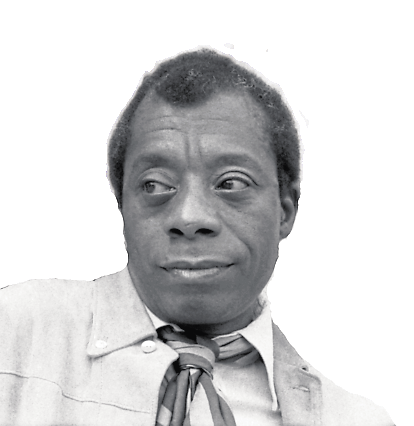
In December 1986, at a meeting at the National Press Club in Washington DC, USA, not long before his death, the African-American author James Baldwin proposed (seriously as far as I can tell) the setting up of White History Week: ‘I’m not joking when I talk about white history week. One of the things that most afflicts this country is that white people don’t know who they are or where they come from. That’s why you think I’m a problem. But, I am not a problem, your history is. And, as long as you pretend you don’t know your history, you’re going to be the prisoner of it. And there’s no question of your liberating me – because you can’t liberate yourselves. We’re in this together. And, finally, when white people, quote unquote white people, talk about progress in relation to black people, all they are saying and all they can possibly mean by the word progress is how quickly and how thoroughly I become white. Well, I do not want to become white, I want to grow up and so should you.’
This essay is sort of a contribution to James Baldwin’s White History Week. I hope it is useful to some other people of colour as well as to white readers.
*
The point of this essay is to look at where whiteness comes from, how it came about. There are lots of other important things to investigate in terms of whiteness, and maybe Peace News will look at them in future issues, but this is our topic today.
It may help to explain our destination. We haveto turn the world right way up to be able to see ‘the invention of the white race’ clearly, but this is where we are going: ‘Whiteness was invented as a racial category by wealthy and powerful people, working with and through the British state, in order to preserve their privileges, by breaking up the dangerous alliance that was growing up between what we would now call poor and working-class people of colour and what we would now call poor and working-class white people.’
The argument (not mine, it was developed by other folk) is that whiteness was made up to stop poor and working-class white people from continuing to understand that they had common interests with poor and working-class people of colour, and to stop them from continuing to act on the understanding.
In other words, the history we’re going to look at shows that whiteness was created to divert white people from taking common action with people of colour to challenge the existing power structure within (a part of) the British empire.
Whiteness was created as racial oppression against black people and at the same time a class weapon against poor white people.
*
What do I mean by ‘the white race’? I mean that (a) there was a group of people who saw themselves as ‘white’ and who were seen by others as ‘white’, and (b) that group was defined as separate from and superior to other people.
The creation of ‘the white race’ was meant to break a dangerous cross-race coalition that was developing – by giving poor and working-class white people some trinket privileges. These included what African-American sociologist WEB Du Bois called, in 1935, ‘a sort of public and psychological wage’.
In other words, the reason whiteness was invented was to prevent a major challenge to the power and wealth of those who owned and governed society, those who ruled the British empire.
That’s where we’re going to get to, how and where and when whiteness was invented, but before we can get there and have a good look, there is a lot of ground that needs to be cleared.
*

Some people in the anti-racist movement use the phrases ‘racialised minorities’ and ‘racialised communities’ to refer to groups targeted by white racism – black people, Asians and others.
One reason why they say ‘racialised’ is that they want to make the point that these groups of people have been given certain racial identities by dominant white society.
The word emphasises, in a way that other descriptions like ‘BAME’ and ‘people of colour’ don’t, that ‘race’ is not a biological reality.
“White people are also a ‘racialised community’.”
‘Racialised’ is also meant to emphasise that imposing racial identities in this way results in inequalities and oppression.
I’ve realised, writing this article, that white people are also a ‘racialised community’. Saying that only black and brown people are ‘racialised communities’ is like saying that only black and brown people are ‘ethnic’. White people have ethnic identities, too, and they also have a racial identity.
I’m going to stick to my preferred description, ‘people of colour’. Also, I am going to try to name the racial identity of the white folk mentioned in this essay, as a break with the usual practice of only naming people’s racial identities if they are are people of colour.
*
Sarah Brownsword is a white academic who works at the University of East Anglia, teaching people to become primary school teachers in a rural part of England that is much whiter than the rest of the UK. People of colour make up only 3.5 percent of the population, compared to 14.6 percent nationally.
In 2017, Brownsword’s end-of-course questionnaire found that a large minority (40 percent) of the majority-white trainee teachers were not confident about their ability to teach ‘pupils from minority ethnic backgrounds’.
Brownsword followed up with an online survey and a focus group interview with three of the people who’d been on the course.
Half the teachers who took the online survey thought that understanding their own ethnicity was not relevant to teaching children from communities of colour. These folk were all white. Brownsword summed up their thinking: ‘Participants talked about not having an ethnicity and Whiteness being “normal”.’ She quoted one person: ‘My own ethnicity is the “norm” for the area. I feel like understanding my own does not provide relevance to children from BAME backgrounds.’
*

Inspired by Brownsword’s survey, we carried out our own online poll of white people over Christmas and the New Year – people who’ve signed up to the Peace News email newsletter.
We asked people whether they had ever spent time thinking about the fact that they were white. Several people reported that they had started reflecting on it since the latest upsurge of the Black Lives Matter movement: ‘I have recently been thinking about it, for the first time ever, since George Floyd was assassinated, and have been trying with other white Quakers to become aware of my white privilege. It’s extremely difficult to reverse a lifetime of being unconscious of the fact that I am white.’
More responses from white folk about when they started thinking about their whiteness: ‘Yes, over this year I have thought about it a lot.’ ‘Only since the recent BLM actions. I’ve felt ashamed about my lack of knowledge and understanding of racism and racially profiling people.’ ‘I have [thought about my whiteness], but mostly over the last five years and even more so in the last year. These are thoughts about privilege and the uninterrogated ease that I was born with.’
“Four out of 10 people who responded had never thought about their own whiteness before the death of George Floyd.”
In the survey, we asked: ‘As a white person, do you think you have an ethnicity/racial identity?’ Two-thirds of people said ‘yes’, about one person in eight said ‘no’, and 20 percent said ‘maybe’. For a lot of those ‘yes’ folk, I would guess from their other responses that they didn’t mean whiteness as an ethnicity or racial identity, but they had an ethnic or racial identity ‘being Welsh’, ‘being Irish’, ‘being Jewish’, and so on.
We also asked if people had spent much time thinking about the fact that they were white. Almost a third of people said they never had.
Out of the 112 people who responded, 38 said ‘no’ or ‘not really’ or words to that effect (for example: ‘I don’t spend time thinking about it... I just know I am lucky to be white’). One person in 11, just under nine percent of people, said they had been thinking about their own whiteness, but only recently – since the death of George Floyd.
Taking those figures together, that means that four out of 10 people who responded, who are bound to be a lot more politically and racially conscious than the general population, had never thought about their own whiteness before the death of George Floyd and the second wave of Black Lives Matter last summer.
When we asked if people had ever had difficult feelings about being white, about a third of the people answering said that they had never had any difficult feelings about their racial identity in their whole lives.
I’d like to quote one response which showed the tension between anti-immigrant racism and anti-people of colour racism.
One person wrote that they had thought about their whiteness: ‘Yes. Most especially that nobody has ever asked me “where are you (really) from” even though I have 2 immigrant grandparents. If they’d been non white, I know I’d be asked that question all the time. I know people would question my right to the identity of the country I was born and grew up in. I wonder how people survive that because I’d be in a rage all the time and want to burn things down.’
Going back to Sarah Brownsword’s study, she thought it was a problem that so many of the white people in her survey (half of them) thought that they didn’t need to understand their own ethnic/racial identity in order to be able to teach children from communities of colour.
Brownsword argued that these white primary school teachers needed to able to recognise and acknowledge ‘the advantages of being members of the dominant [racial] group in society’ in order to teach effectively across race.
*
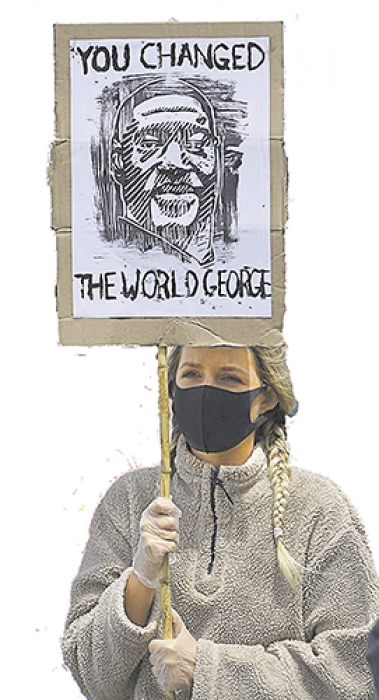
In our ‘What’s It Like, Being White?’ survey, we asked people what they felt about the next issue of Peace News being about ‘the invention of the white race’. Several people were puzzled, and some were dismissive.
One person wrote: ‘not good as it assumes the white race was invented whereas we are fundamentally brown people who moved from the tropics and got paler to absorb the vital vitamin D of which there is less the further from the equator’.
One problem with this picture is that northern Europeans are not the only group of humans who ‘got paler’ after leaving Africa. But they are the only ‘paler’ humans who are now classified as ‘white’.
The word ‘hominids’ has changed its meaning over time. Hominids are now defined as all modern and extinct Great Apes. The modern part of that includes chimpanzees, gorillas, modern humans and orang-utans.
“In terms of skin colour genes, white people are closer to the apes than are dark-skinned people.”
Out of that hominid tree comes our branch, the ‘hominins’, which is all the human species there have ever been, including the Neanderthals and Australopithecus and us.
At some point, maybe 1.2 million years ago, hominins lost our fur, we became different from the other Great Apes. Our exposed skins became brown. Some scientists think this was to protect a critical vitamin from being destroyed by the sun’s ultraviolet radiation (UV) as it circulated in our blood. ‘Folate’, or vitamin B9, is the naturally-occurring form of folic acid. It is important for lots of things, including DNA repair and much of the pregnancy process.
What this means is that pale skin is a much older, Great Ape-related, characteristic. As we shall see, scientists have established that, just in terms of skin colour genes, white European-heritage people are closer to the apes than are dark-skinned people.
*
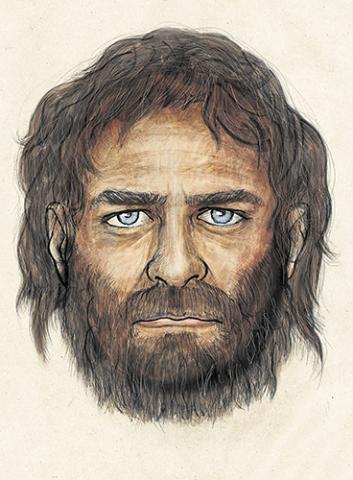
The figures are changing all the time, but it’s often said that Homo sapiens showed up in Africa perhaps 300,000 years ago, and our version, modern humans, us, maybe 120,000 years ago. It’s generally thought that we (modern humans) spread out from Africa in a single large wave about 70,000 – 50,000 years ago. (There were a few earlier small-group efforts, but they don’t seem to have led to lasting colonies of modern humans.) In that one big wave, some of us turned left towards what is now Europe – and some of us turned right towards what we now call Asia.
In both East Asia and Europe, modern human skins became paler, reducing the amount of melanin (dark colouring) in the skin. So, on both sides of the land mass of Eurasia, there were and are pale-skinned people.
Recent studies have shown that different genes are responsible for the lighter skin colours found in the two areas.
Confusingly, the genes that have been identified for lighter skin colours have turned out to be the oldest skin colour genes, maybe going back to when we had fur. US evolutionary geneticist Sarah Tishkoff, of the University of Pennsylvania, USA, says: ‘Many of the gene variants that cause light skin in Europe have origins in Africa.’
So, in East Asia and Europe, when people got paler, they were drawing on different options from a common pool of very ancient pale-skin genes.
US bioinformatics graduate student Jedidiah Carlson, of the University of Michigan, points out that white supremacist groups ‘often rally around the demonstrably false claim that Africans are more genetically similar to ancestral hominids than Europeans – and these results turn the tables.’
Carlson told the Atlantic magazine that, in relation to several genes that influence skin colour: ‘Europeans are actually more likely to be genetically similar to great apes.’
One of those genes, the OCA2 gene, which affects melanin production, has been shown to be involved in both East Asian and European light-skinned populations, but the allele or version of OCA2 that causes paler skin is different in the two regions.
On the other hand, some genes known to be involved in producing light skin colour in Europeans, such as SLC24A5, are not found among East Asians at all.
In other words, pale skin evolved independently in East Asia and in Europe – and quite recently, in both regions.
*
It’s worth saying that the lighter-skin version of SLC24A5 isn’t ‘European’. It’s been circulating in the East African gene pool for thousands of years (scientists think it came in from the Middle East), long before European colonisers showed up. The relevant version (allele) of SLC24A5 is common among some Ethiopian and Tanzanian groups – but it doesn’t lighten skin colour in the way that it does in Europeans.
Nina Jablonski, an anthropologist from Pennsylvania State University in the US, says this is a reminder that ‘a person can carry a gene that confers a particular trait in one population and yet not obviously show evidence of that trait themselves’.
It is also a reminder that there is no scientific basis for ‘race’, even in connection with skin colour.
Going back to how recently pale skin has turned up: different groups of researchers have found evidence suggesting that East Asians evolved light skins between 15,200 and 6,400 years ago.
In Europe, a comparison of European and sub-Saharan African genes, in a study led by Sandra Beleza at the University of Porto in Portugal, suggested that three paler-skin genes swept through the European population between 19,000 and 11,000 years ago.
“For most of the time that there have been ‘Europeans’, they’ve been dark-skinned.”
Modern humans have been in Europe for 45,000 years or so, which means that for most of the time that there have been ‘Europeans’, they’ve been dark-skinned.
Based on DNA analysis, many (but not all) Neanderthals are thought to have had light-coloured skin (and reddish hair), but they went extinct 28,000 years ago. It looks like they did not pass on the pale skin genes to modern humans in Europe.
Another recent study suggests that lighter skin colour might have become widespread in Europe only in the last 7,000 years.
A Barcelona-based institute analysed DNA from the skeleton of a male hunter-gatherer found in a cave in north-west Spain. He died 7,000 years ago. It was found that he had blue eyes (and was most closely genetically-related to people in Sweden and Finland), but he also had dark skin and black or brown hair.
This all casts doubt on the idea that skins became paler because of the need to increase the amount of UV that Europeans could absorb.
*
A separate international study of bones from nine ancient Europeans confirmed that blue-eyed, dark-skinned people did exist around this time.
The study was of eight 8,000-year-old hunter-gatherers (seven from Scandinavia and one from Luxemburg) and a 7,000-year-old farmer from Stuttgart, Germany. The ancient farmer was pale-skinned with brown eyes, but the hunter-gatherers had dark skins and blue eyes.
Dr Carles Lalueza-Fox, of the Institute of Evolutionary Biology in Barcelona, told the BBC: ‘It has been assumed that it is something that happens in response to going from Africa to higher latitudes where the UV radiation is very low and you need to synthesise vitamin D in your skin. Your skin becomes lighter quite soon. It is obvious that this is not the case, because [the Spanish hunter-gatherer] has been in Europe for 40,000 years and he still has dark skin.’
So, even at the level of genetics, ‘whiteness’ is complicated.
While both East Asians and Europeans have evolved very pale skin, East Asians are not generally considered ‘white people’ or part of what we can call ‘the white race’.
This is not biology, this is not evolution. A decision has been made, at some point, by someone, that some pale skins are to be called ‘white’ and some other pale skins are to be called ‘Asian’.
Incidentally, it wasn’t possible to establish whether all the scientists quoted in this section would identify as white, but all the ones I could find photos of appeared to be white.
*
Putting the European/East Asian divide to one side, whiteness does feel eternal, as if there must always have been white people in the world, ever since modern humans existed – or at least since European modern humans got pale skin.
It feels as if there must always have been people who saw themselves as white, and who were seen by others as white, a collection of groups who were labelled ‘white people’ by everyone.
The trouble is that if we go back just a couple of thousand years to the Ancient Greeks, seen by many as ‘the founders of Western civilisation’, they didn’t see the world in terms of ‘white people’ and ‘black people’ and so on. They certainly didn’t see themselves as ‘white’, as we shall see. The Ancient Greeks had racial ideas, for sure, and they saw people’s different skin colours, but they generally labelled people on the basis of their place, not their face.
A US classical scholar, Rebecca Futo Kennedy, gives some examples of this thinking from both Ancient Greece and Ancient Rome in her 2017 essay, ‘Why I Teach About Race and Ethnicity in the Classical World’:
‘Hippocrates, the Greek physician, tells us that Scythians (a name that designated nearly all northern European peoples in the 5th century BCE) are red, flabby, unhealthy, and filled with water because they live in a cold, wet climate (Hipp. Aer. 15). Vitruvius, the Roman architect, explains that people from hot, dry climates, such as the Ethiopians, are long-lived and healthy, dark skinned (because of sunburn), intelligent, and cowardly because they don’t have a lot of blood to spare – the heat dries it up. Germans, on the other hand, had red hair and were pale because of cold burn, dull-witted, and courageous – wet climate means more blood, which means they didn’t worry about losing it in a fight (Vit. de Arch. 6.1.).’
Biological factors are important in this way of thinking, and skin colour is mentioned. Overall, though, this is a very different kind of ‘race theory’ to what we’re used to dealing with today. Skin colour is mentioned as a random effect of the environment, not as a clear mark of being either superior or inferior.
Geography and climate are the crucial driving forces which create different kinds of peoples, in the view of these ancient cultures.
It turns out that Ancient Greeks and Romans didn’t have a notion of ‘whiteness’ in terms of race. Greek men would not have ‘even want[ed] to consider themselves “white” (only women, people with diseases or those burned by cold were “white”)’, as Rebecca Futo Kennedy points out.
Another classical scholar, James H Dee, has a slightly longer list of the people for whom, ‘in the eyes of the Greeks, “white” skin was an accepted and expected characteristic: women, barbarians living north of the Alps, the perilously ill, pasty-faced philosophers, and cowards.’
Women and goddesses were often referred to as ‘white’ or ‘white-armed’, while men (for example Odysseus and Heracles/Hercules) were said to be ‘black’ or to have ‘black skins’. This was to do with women being thought to stay inside, out of the sun (which was unhealthy), and men being active outside and getting a tan (which meant that you were healthy).
*
Herodotus, the ancient Greek author who is known as ‘the father of history’, was the first person to use systematic investigation as the basis of history-writing.
Aven McMaster, a classics lecturer at Thorneloe University in Canada, explained in 2017 that Herodotus writes a great deal about different non-Greek peoples in his history books but ‘he focuses mostly on how they act’.
Like other Greeks of his era (he lived in the fifth century BCE), Herodotus ‘does not categorise the world by skin colour’, McMaster confirms.
When he writes about non-Greek people, Herodotus’s main interest is in questions like: ‘How many people do they marry? What are their marriage customs? How do they have sex and where?’ In the case of the Egyptians, he asked: ‘Where do they urinate?’
Other questions the father of history was interested in: ‘What do they eat?’ ‘What are their salient political characteristics?’ ‘What kinds of leaders do they have? How do they elect them?’ ‘How do they fight? What weapons do they use?’
McMaster explains: ‘Among all of those things, he’ll often mention things like their hair colour, their eye colour, their skin colour, or the shape of their heads, or their particular physical peculiarities, but they’re very much all of a piece with all the other things that distinguish them, and their language sometimes.’
“Between the ninth and twelfth centuries, Europe was the commercial colony of a mysterious Asia.”
She goes on: ‘He remarks upon the skin colour of some people but not everyone. Many of the groups he talks about, he doesn’t say anything about skin colour. He doesn’t seem to think that is the preeminent division among them.’
He views the physical characteristics of people as a result of the geography: ‘where they lived affected what they looked like’.
James H Dee points out that Ancient Greeks would have laughed at the idea of a Europe-centred approach to the world ‘if it meant linking themselves in any serious way with those barbarian transalpine [Northern European] tribes.’
Dee goes on: ‘When Caesar invaded Britain [in 55 BCE], the civilizations of Mesopotamia and Egypt were already several thousand years old, but the ancestors of today’s Britons were still living in huts and painting their bodies blue with woad.’
These civilisations were not ‘white’ in the sense we use the word today – they were (to use our modern language) multi-racial and multi-ethnic and included parts of what we now call North Africa and Central and West Asia. For the Ancient Greeks, you were a Greek if you spoke Greek, worshipped Greek gods and held to Greek customs.
So ‘the white race’ as we understand and define it today did not exist for the Ancient Greeks – or for the Romans – and would have been seen by both as a bizarre joke.
Incidentally, it seems that both the Ancient Greeks and the Romans thought of their skin colour as the perfect middle ground between the whiteness of the northern European barbarians and the blackness of the Ethiopians.
*
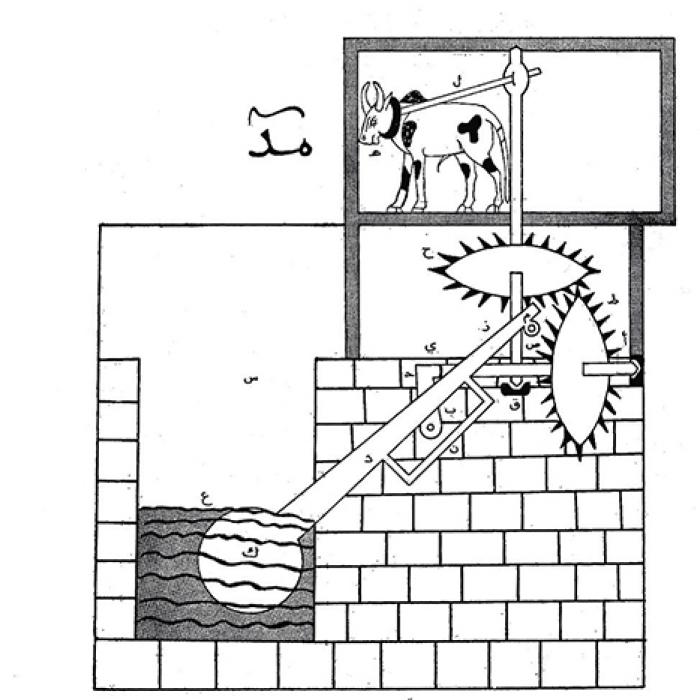
In the story of whiteness, there are some connected, overlapping ideas. ‘Europe’ is one of them, ‘Christian’ is another, and so is ‘the West’. They all have a strong connection to whiteness, despite the fact that Europe has millions of citizens of colour and that Christianity today is more African and Latin American than European.
Have you ever wondered why ‘the West’ is ‘the West’? Other imperial areas have not been so modest. China, for example, has called itself the ‘central state’ (Zhōngguó – often translated as ‘Middle Kingdom’) and ‘central beauty’ (Zhōnghuá). What is ‘the West’ west of?
The Scottish historian, AP Thornton, wrote in his book, Doctrines of Imperialism, in 1965: ‘Between the ninth and twelfth centuries, Europe was the commercial colony of a mysterious Asia. It lived barbarously while the world of Islam flourished.... Even in the “darkest” of times, papyrus, silks, and textiles were always available to the clerks and nobles of “the West” (a term worth more attention than it gets, since it emphasises that Europe enters the world stage as an appendage, a peninsula of Asia).’
To get a flavour of this time, I’ll quote a little from the Washington Post review of Violet Moller’s 2019 book, The Map of Knowledge: A Thousand-Year History of How Classical Ideas Were Lost and Found.
Moller traces the survival of some important books by three scholars who studied in ancient Alexandria in Egypt: Euclid’s book on mathematics, The Elements (published in 300 BCE); Ptolemy’s astronomical collection, The Almagest (around 150 CE); and Galen’s massive book of ancient medical knowledge (around 128 CE). There are no surviving original copies of these three books.
The first step Moller traces is to Baghdad, in Mesopotamia, during the Abbasid caliphate. This is the Washington Post reviewer, summing things up: ‘Euclid, Ptolemy and Galen were all translated from Greek into Arabic,and scholars used this knowledge to develop multiple scientific fields. One scholar, al-Razi, drew on Galen to establish psychology, pediatric disciplines, hospitals and the practice of clinical trials that used control groups. Influenced by Ptolemy’s calculations, other scientists were able to determine the Earth’s circumference to within 400 miles of today’s more accurate measurements. “At a time when many Europeans were living on turnips and trying to fend off the Vikings,” Moller writes, Baghdad’s scientists were fostering a “golden age of discovery and enlightenment,” even inventing the crankshaft, which didn’t make it to Europe until the 14th century and is still used in today’s engines.’
Another stage in the transmission of Euclid, Ptolemy and Galen, Moller points out, is through Islamic Spain, the home of different Muslim civilisations for over 300 years, a vital place for exchanging scientific and philosophical ideas from the Middle East. The word ‘Andalusia’ comes from ‘Al-Andalus’, the name Arabs gave part of the territory they settled.
*
Another point that AP Thornton made in Doctrines of Imperialism was that European colonialism begins as an attempt to escape from Europe’s inferior position. The Muslim empires of the Middle East, themselves rich, were obstacles on the road to the vast hidden wealth of India and China, leaving Europeans frustrated.
Thornton wrote: ‘An imperialism of their own is their remedy for their own state of colonialism. The whole story of is one of colonial rebellion. Like all such, it is a rebellion against narrow bounds, against the circumstances that confine not commerce only but life itself, that keeps the intelligence stagnant and enterprise still. The motivating force is a wish to break free, to break out. This need to assert converts easily into a determination to dominate....’
At this point, it is difficult to remember that Christopher Columbus didn’t set out to reach the Americas. The white Italian explorer originally aimed to reach China and India by a route that avoided the interference and control of Arab traders, and especially the Ottoman empire, the Muslim superpower in the Middle East.
His aim (and the aim of his royal sponsors) was to get direct access to the spice trade, to the super-expensive, super-profitable luxuries such as pepper, nutmeg and cinnamon, grown mysteriously in ‘the Indies’.
That’s why Columbus called the people he met in the Caribbean ‘Indios’ – ‘Indians’. That’s why ‘the West Indies’ are called ‘the West Indies’. That’s why ‘American Indians’ were called ‘American Indians’.
He thought he'd reached Asia and was conquering Asians.
*
For centuries, Europeans found it impossible to solve their balance of trade problem with China. China didn’t seem to need anything that Europeans had, but was full of luxuries that Europeans couldn’t get enough of – like silk, china and tea.
The British didn’t come up with a solution until the end of the 18th century, when Warren Hastings, the governor general of British India, started growing opium in large plantations in Bengal to smuggle into China to create millions of opium addicts – and to help pay for British imports of tea from China. This was another kind of ‘triangular trade’, involving government-organised drug-pushing on a huge scale.
Already by 1785, opium sales brought in as much as 15 percent of all the revenues of the East India Company, which controlled the whole of British India.
When the Qing dynasty government in China took police action to seize and burn British-smuggled opium and interfered with the trade in other ways, this led to the two Opium Wars. Britain fought in 1838 – 42 and 1856 – 60 to force China to accept the British opium trade, and to gain various commercial privileges (including a 99-year lease on Hong Kong Island).
Rolf Bauer, a professor of economic and social history at the University of Vienna, Austria, has studied thousands of pages of evidence assembled by the British government and has established that growing opium was terrible for Indian farmers as well as for ordinary Chinese people.
The East India Company offered interest-free advance payments to poor poppy farmers, but then set the price of opium so low that they had no chance of covering their costs. Soon, the company had trapped millions of farmers in debt and contractual obligations which meant the farmers had to grow opium (at a loss) to sell to the company.
More straightforwardly, Indian peasants in Bengal, Bihar and elsewhere were also kidnapped, arrested and threatened with the destruction of their crops if they refused to grow opium.
All this is part of the story of English tea-drinking, that quaint innocent custom of the original white people.
*
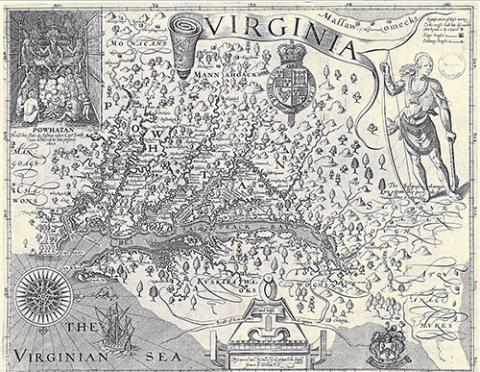
Finally, we’ve cleared some of the ground blocking our view. Most of what follows is from a 1975 study by a white, working-class US historian, Theodore W Allen: The Invention of the White Race.
Allen argues that before the 18th century, there was no widespread idea of ‘whiteness’.
‘The invention of the white race’ happened in Virginia, an English colony in North America named after Elizabeth I (‘the virgin queen’) and ruled by officials with the authority and support of the king of England. (‘Britain’ and ‘the United Kingdom’ didn’t exist until 1707 when Scotland came into union with England and Wales. A lot of what follows will talk about ‘England’ doing this or that in the 17th century.)
*
When English colonists settled Jamestown, the first successful English colony, in 1607, they were unknowingly occupying part of Tsenacommacah, an empire of about 30 Algonquian-speaking peoples, made up of tens of thousands of Native Americans, spread over 16,000 square miles.
The emperor of Tsenacommacah (‘densely inhabited land’) was a man named Wahunsenacawh, who the settlers called ‘Powhatan’. They called his people ‘the Powhatan people’. Scattered violence between settlers and local people came to an end in 1613 when the English kidnapped and held as hostage Wahunsenacawh’s daughter, known in Western culture as ‘Pocahontas’.
After the death of Wahunsenacawh in 1618 (Pocahontas had died the year before, in England), there were major conflicts leading to a treaty in 1646 which the English did not honour. Tsenacommacah was destroyed and the people scattered. Very few now remain.
This is a small part of the larger picture of European conquest, betrayal and destruction. According to a recent estimate, European diseases were the main reason for the death of 55 million Native Americans in the century or so after Columbus first landed, out of the 60 million people living in the Americas in 1492.
*
Within a few years of its founding, Virginia became a tobacco colony. Tobacco became the currency and the main crop. This was a big earner for the English government. Whatever the price of tobacco on the market, the duty on each barrel of tobacco was the same. This earned Charles II £100,000 a year in the 1670s, a vital part of his revenue.
So, the English government put pressure on Virginia to stay focused on tobacco.
The colony was first set up as a business, by a business, the Virginia Company of London. Those wealthy investors continued to have a controlling hand in the colony after the Virginia Company went bust in 1624 and the king, James I, took direct control of the colony.
James allowed ‘self-government’ which meant the same rich landowners who had been the local company officials now ran the colony in the name of the king.
Those big landowners, hemmed in by the government’s demand for tobacco tax income, created a powder-keg society through their relentless pursuit of profit.
*
For farmers, rich and poor, tobacco was initially very profitable. Everyone was growing it. There was soon too much tobacco and prices slumped. From an average of 4d (four pence) per pound of tobacco in the 1630s, the price fell by mid-century to an average of 2.2d.
From 1660 to the mid-1670s, the price held at an average of 1.2d per pound.
This put unbearable financial pressure on all but the wealthiest people in Virginia (the wealthiest actually made money through moneylending).
In 1675 – 1676, the people of the colony erupted in what is known as ‘Bacon’s Rebellion’, led by a wealthy plantation owner, Nathaniel Bacon.
Bacon felt that the governor of Virginia, William Berkeley, was not being aggressive enough towards Native Americans. He launched his own raids, starting in September 1675, then raised an army of thousands to wage all-out war of genocide.
Bacon called on colonists from all classes to join him, and (to get the largest possible army) he promised freedom to servants and enslaved people if they would join his side.
What began as a race war against Native Americans turned into a civil war inside the colony as servants and enslaved people took up arms to fight for their freedom.
England sent out forces to put down the uprising: captain Thomas Grantham arrived on 21 November 1676 in charge of the 30-gun Concord. Grantham soon talked a 300-strong rebel camp at a place called West Point into surrendering – he lied to them, saying that they would all be pardoned and that bond-labourers would be freed from service.
He then performed the same trick, slightly less successfully, at a larger camp nearby. This is Grantham’s own account of events at the second camp:
‘I went to Colonel West’s house about three miles farther, which was their Cheife Garrison and Magazine; I there mett about foure hundred English and Negroes in Armes, who were much dissatisfied at the Surrender of the Point, saying I had betray’d them, and thereupon some were for shooting mee, and others were for cutting mee in peeces; I told them I would willingly surrender myselfe to them, till they were satisfied from his Majestie, and did ingage to the Negroes and Servants that they were all pardoned and freed from their Slavery: and with faire promises and Rundletts of Brandy, I pacified them, giving them severall Noates under my hand, that what I did was by the Order of His Majestie and the Governor.... Most of them I persuaded to goe to their Homes... except about Eighty Negroes and Twenty English which would not deliver their Armes.’
Theodore Allen holds up this testimony as having ‘a significance that is beyond exaggeration’. It shows that ‘laboring-class African-Americans and European-Americans fought side by side for the abolition of slavery.’
This, Allen argues, is ‘the supreme proof that the white race did not then exist’ in 1676. Working-class European-Americans in the colony did not feel superior to, or separate from, working-class African-Americans; they fought for freedom together on the basis of shared interests.
Allen argues that it was this threat of cross-racial class-based rebellion that prompted the Virginia Slave Codes of 1705, which brought about massive differences between white people and black people.
*
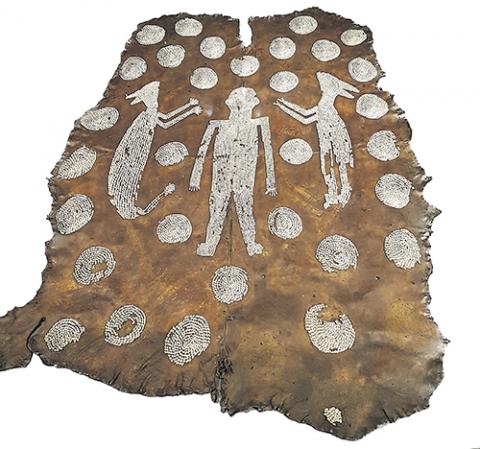
How did it come about that working-class European-Americans and working-class African-Americans could feel the unity that they showed in Bacon’s Rebellion?
Let’s look at one line in Grantham’s story. He says he did ‘ingage to the Negroes and Servants that they were all pardoned and freed from their Slavery’.
Grantham uses the single word ‘Slavery’ to describe the unfree state of both ‘servants’ and enslaved people. Theodore Allen has a single name for all these unfree workers: ‘bond labourers’. This includes ‘indentured servants’ and ‘convict servants’, who generally served for a fixed number of years, as well as enslaved people, who were generally bound for life.
In the first years of the colony, most unfree workers were European indentured servants.
An ‘indenture’ is just a contract. An English ‘indentured servant’ would sign an agreement in England to work in Virginia as a farm labourer (without wages) for, say, four years. In return, they would get: passage out to the colony; food, clothing and shelter during the four years; and some reward at the end of their time (‘freedom dues’).
You could sign a similar agreement to come out and work as a tenant farmer for a limited period – without wages, but keeping half the harvest each year.
Allen points out that, for much of the 17th century, there was no real difference between time-limited bond-labour and lifetime bond-labour (slavery), because indentured servants died at such a horrific rate.
“In the first years of the colony, most unfree workers were European indentured servants”
Five out of every six bond-labourers died in the first year of bondage during the colony’s first 30 years. That’s according to an account written in 1649, which also says the first year of service was called the ‘seasoning’ time.
Berkeley, the governor of Virginia we’ve already heard about, reported to his masters in London in 1671 that bond-labourers were now generally surviving the first ‘seasoning’ year, but that ‘heretofore not one of five escaped the first year’. That means that eight, maybe nine, out of every 10 bond-labourers died in their first year.
The death rate was partly to do with the climate and diseases. It was also to do with the poor food and intense work rate.
In New England, another English colony, which was settled by communities and families, limited-term bond labourers enjoyed close personal relationships with their masters, as was normal for involvement in crafts and household service.
In Virginia, on the other hand, a profit-driven tobacco colony created by wealthy investors, bond-labourers worked mostly in the field, with strict overseers, and there were generally harsh master-servant relationships.
The conditions that employers placed on bond-labourers – through the laws of the colony – were horrific. Initially, those conditions were placed on European-American bond-labourers, as they were the first workforce in Virginia. Some came voluntarily. Some were caught in prison or the workhouse in England and were sold off at £2 a head (or less) to be exported as bond-labourers to Virginia.
In 1643 and 1663, Virginia made ‘pass laws’: a labourer would be arrested as a runaway servant unless they could show a permission slip from their owner or a recognised authority.
Even a fixed-term bond-labourer who had served her or his period of indentured service was at risk of being arrested and given more years of unpaid service as a punishment for ‘running away’, unless they had a certificate of freedom from the county court, stating that they were free.
If you were poor, you needed authorisation to be allowed to move around without being arrested, whether you were ‘in service’ to someone or free.
If you were caught running away twice, you would be branded with an ‘R’ on your shoulder.
Bond-labourers were also forbidden to marry without the permission of their owners – on the grounds that the time and energy put into childcare would reduce the time and energy a mother would be able to put into serving her master.
These are just some of the inhuman conditions placed on bond-labourers – conditions which would have been illegal in England itself. When first developed, as already pointed out, these conditions were imposed on European-Americans, mostly on English workers.
African-American historian Lerone Bennett Jr wrote about this in his 1975 book, The Shaping of Black America. He wrote that ‘white servitude was the proving ground’ for black slavery:
‘The plantation pass system, the slave trade, the sexual exploitation of servant women, the whipping-post and slave chain and branding iron, the overseer, the house servant, the Uncle Tom: all these mechanisms were tried out and perfected on white men and women.... [I]t is plain that nothing substantial can be said about the mechanisms of black bondage in America except against the background and within the perspective of white bondage in America.’
*
The situation of black Africans in Virginia was much more fluid and ambiguous in 17th-century Virginia than you might imagine.
Some African-Americans were waged workers, free from bondage. Allen gives the example of a man called Brase, recorded as ‘a Negro’ who came to Jamestown in July 1625 with a Frenchman and a ‘Portugall’, all of their own free will. In September 1625, Brase is recorded as having started work for ‘Lady Yardley’ for a monthly wage of 40 pounds of good merchantable tobacco. The following month, he became a ‘servant’ of the governor, Francis Wyatt.
Allen comments: ‘There was no suggesting that, “being a Negro,” he was to be a lifetime bond-laborer.’ It seems that, at first, at least, Brase was a waged worker, not an unwaged bond-labourer.
African-American historian A Leon Higginbotham Jr thinks that one of the most fascinating court cases of the early years in Virginia was that of John Graweere, a ‘negro servant unto William Evans’, in 1641.
With the permission of Virginia’s colonial court, Graweere bought the freedom of his young child from a white military officer (who owned the mother of the child). He wanted his child to be raised a Christian, and the court enabled that to happen.
Graweere’s master, Evans, had allowed him to keep pigs – on condition that they split the profits 50 – 50. That’s how Graweere had the money to buy his child’s freedom.
As Higginbotham points out, we don’t know exactly whether Graweere was a time-limited indentured servant, or if he was enslaved for the rest of his life.
Either way, Graweere enjoyed freedoms in 1641 that would soon become unthinkable for African-American bond-labourers: he owned his own property and had his own money; he operated his own business and kept profits from it; he was able to take legal action and be heard in a white court; and, in Higginbotham’s words, Graweere broke ‘the grip of hereditary servitude by purchasing the child’s freedom’.
*
In 1654, John Casor, an African-American, claimed that he was a limited-term bond labourer who had worked the agreed number of years – and who should therefore be freed from service to a farmer named Anthony Johnson. Casor ran off to a nearby white farmer’s plantation where he signed on as a limited-term bond labourer.
Anthony Johnson took legal action and recovered his ‘property’. He had the colonial court confirm that he owned John Casor as a lifetime enslaved person.
Being a limited-term indentured servant must have been a fairly normal thing for an African-American in Virginia for it to have worked (temporarily) for John Casor.
Two points. Firstly, this case (in 1654) was the first time a Virginia court ruled that a person who had not committed a crime was enslaved for life.
Secondly, Anthony Johnson, the man who enslaved John Casor, was an African-American, one of the first kidnapped Africans to be brought into Virginia, who had somehow freed himself and become a large landowner.
These stories, and many others, show that attitudes to blackness in 17th-century Virginia were much more complicated than you might think, and there was not the vicious, unrelenting hostility that was set in place in the following century.
*
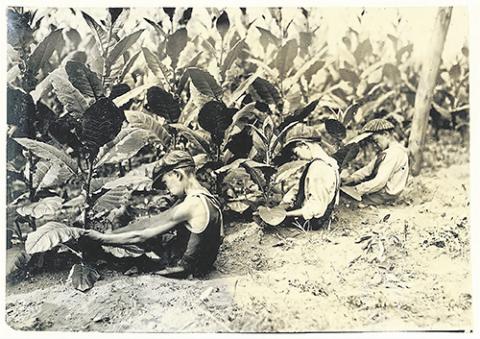
For all bond-labourers, black or white, life was hard. Owners in Virginia reduced the day-to-day costs of bonded labour by forcing their labourers to eat only ‘Indian corn’ – maize – reserving meat for the export market. (At that time, there was no export market for maize in Europe.)
After working a backbreaking day in the field, workers then had to pound de-hulled maize at night to produce their own food. This cornflour was called ‘hominy’, a word borrowed from indigenous people – as was the food preparation method.
Allen quotes from a poem, published around 1800, written by an English convict servant who, along with many others, was ‘Sold for a slave because you prov’d a thief’. James Revel wrote ‘The Poor Unhappy Transported Felon’ about his 14 years in North America:
We and the negroes both alike did fare,
Of work and food we had an equal share;
And in a piece of ground that’s call’d our own,
That we eat first by ourselves was sown.
No other time to us they will allow,
But on a Sunday we the same must do,
Six days we slave for our master’s good,
The seventh is to produce our food.
And when our hard day’s work is done,
Away unto the mill we must begone.
Till twelve or one o’clock a-grinding corn,
And must be up by day-light in the morn....
At last it pleased God I sick didfall,
Yet I no favour did receive at all,
For I was forc’d to work while I could stand,
Or hold the hoe within my feeble hand.
Much hardship then indeed I did endure,
No dog was ever nursed so before,
More pity the poor negro slaves bestow’d,
Than my brutual and inhuman master would.
This shows us the harshness of tobacco plantation work for a bond-labourer, the burden of producing your own food as well as tending to the tobacco, and the fellow-feeling between white bond-labourers and enslaved African-Americans, even at the end of the 18th century.
*
Edmund S Morgan, a white US historian, writes in his 1975 book, American Slavery, American Freedom: The Ordeal of Colonial Virginia: ‘There are hints that the two despised groups initially saw each other as sharing the same predicament. It was common, for example, for servants and slaves to run away together, steal hogs together, get drunk together. It was not uncommon for them to make love together.’
Allen documents many acts of resistance by bond-labourers. One of the most striking was an attempted uprising in September 1663 by a group of men who had served in Oliver Cromwell’s republican army, and who had been transported to Virginia by the restored monarchy. The veterans planned to go from door to door, rousing all bond-labourers to overthrow their masters.
“It was common for servants and slaves to run away together, steal hogs together, get drunk together.”
There is no indication that the veterans planned to discriminate against African-American bond-labourers – they seem to have intended a straightforward class war of all ‘servants’ fighting for their freedom.
Allen has compiled a list from court records of over 880 individual bond-labourers who fled from their owners and from Virginia, most of them in groups.
Many of those were mixed-race groups. For example, in 1673, in Lancaster county, Allen writes: ‘European-American bond-labourers William Adams, Robert Bull and John Stookey and an African-American bond-labourer, Tom, coordinated their efforts over three different plantations to run away in a boat belonging to a fourth plantation.’
Allen also lists many free people who helped runaways, including an African-American freeman Emanuell Rodriggus, who was prosecuted in 1672 for having ‘unlawfully entertayned’ two runaway European-American bond-labourers owned by captain John Curtis of Northampton county. There are also recorded cases of European-American free people protecting African-American fugitives.
Allen writes: ‘in none of the hundreds of cases of the oppression of bond-laborers and the resistance by them have I found any instance in which European-American bond-labourers expressed a desire to dissociate their sufferings and struggle from those of the African-American bond-labourers’.
After Bacon’s Rebellion, colonial elites in Virginia and neighbouring Maryland (also a tobacco colony) were frightened of the potential for more multi-racial uprisings.
In 1698, the governor of Maryland, Francis Nicholas, reported to the board of trade in England that his colony had seen the arrival of 326 Negro bond-labourers direct from Africa and another 70 from Virginia and Pennsylvania. He estimated that another 600 – 700 bond-labourers had landed from Europe, ‘Chiefly Irish... , most if not all, papists.’
If these trends continued, Nicholas warned, the two groups might join forces in Maryland and Virginia and make ‘great disturbances, if not a rebellion’.
A few years later, the wealthy rulers of Virginia drew up what are often called the Virginia Slave Codes. Actually, the official title was: ‘An act concerning Servants and Slaves’ – because the point was to have one set of laws for white bond-labourers (servants) and another set of laws for nonwhite bond-labourers (slaves).
*
There had been many laws over the years introducing discrimination against African-Americans, but the 1705 Slave Code was something else. For white servants, there was now a ban on masters ‘whip[ping] a christian white servant naked, without an order from a justice of the peace’. If there was a second offence of mistreating a ‘christian white servant’, that servant could be taken and auctioned off. There was also a legal standard set for ‘freedom dues’ for white servants.
On the other hand, the 1705 law authorised the dismemberment of enslaved African-Americans, and authorised anyone to ‘kill and destroy [runaway] slaves by such ways and means as he, she, or they shall think fit, without accusation or impeachment of any crime for the same.’ The code allowed their owners to kill enslaved African-Americans without fear of punishment: ‘If any slave resist his master... correcting such slave, and shall happen to be killed in such correction... the master shall be free of all punishment... as if such accident never happened’.
There were also new legal restrictions for free African-Americans in 1705: they were banned from holding any office of public trust or from being a witness in any case against a ‘white’ person.
It also became a crime for any free African-American to ‘lift his or her hand’ against any white person – removing their right to self-defence. If they did dare to ‘lift their hand’, they would be subject to 30 lashes at the public whipping post. (This crime – and punishment – had been brought in for unfree African-Americans in 1680.)
Soon a special militia of white men was set up to ‘patrol’ enslaved people – the beginnings of what much later became the police force.
*
At the beginning of the 18th century, ruling elites in Virginia were frightened by the desperation they had created among debt-ridden farmers and working-class people. Allen points out that they could have chosen to genuinely relieve the economic pressure. They could have created real social mobility by providing the capital to enable farmers to diversify their crops away from tobacco, and by giving their bond-labourers a pathway to freedom and economic independence.
Instead, they chose to play the race card, giving poor European-American farmers and agricultural labourers advantages over people of colour – instead of giving them the economic justice and freedom they had been fighting for only a few years earlier.
Whiteness was not created because of the prejudice that poor and working-class European-origin people had towards African-Americans, but because of their lack of prejudice towards black people.
I’ll repeat that. Wealthy elites created the category of ‘white people’ and a system of advantages for ‘white people’ over black people as a class weapon – because poor white people were generally not prejudiced against and had often been working with black people against the rich.


